Cash
Through a current account
In installments through the PIO fund for pensioners
Electronic card (Visa, Master, Dina, etc.)
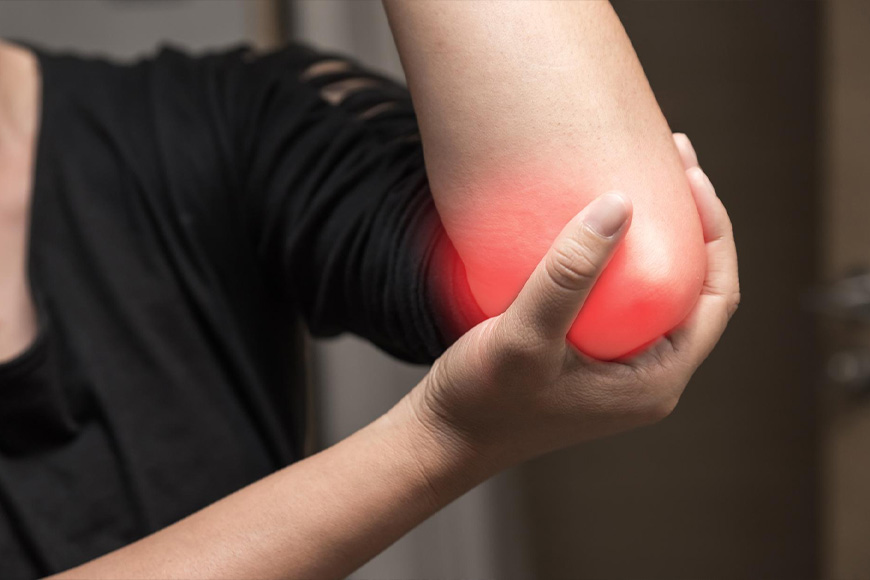
Fokus Fizical 100% guarantees fast and effective healing
Super DISCOUNT! 20% on all therapies in September!
Do not treat yourself over the Internet! Make an appointment via Viber now!
Elbow pain is a common problem that can significantly affect daily activities, from doing household chores to sports and work activities. The elbow is a complex joint that connects the upper arm to the forearm, allowing movements such as bending, straightening and rotation of the forearm. Because of its role in almost all arm movements, elbow pain can be very uncomfortable and limiting.
Elbow pain symptoms can vary depending on the cause and may present in different ways. Elbow pain can result from various conditions and injuries, and the symptoms you experience may differ significantly from case to case. For example, the pain may be sharp, dull, constant, or occur during specific movements. Additionally, symptoms may include restricted movement, swelling, redness, and a feeling of weakness in the arm. Sometimes, tenderness to the touch may also occur. Understanding these symptoms can help you identify potential causes and seek appropriate medical advice.
Sharp or dull pain: Elbow pain can feel like sudden, sharp pain that may occur during certain movements or be constant, depending on the cause. On the other hand, the pain can be dull and persistent, which may affect your ability to function normally.
Restricted movement: Elbow pain may hinder arm movement. You might notice difficulty in bending or straightening the elbow, which can significantly impact everyday activities such as lifting objects or performing physical tasks.
Swelling and redness: If the pain is caused by inflammation or injury, swelling, redness, and warmth may develop in the elbow joint. Swelling can result from fluid buildup or an inflammatory process.
Weakness: In some cases, elbow pain can cause a feeling of weakness in the arm, making it difficult to perform activities that require strength and endurance. This weakness may be due to pain or injury to muscles, tendons, or nerves.
Tenderness to the touch: Certain parts of the elbow may be particularly sensitive to touch, which can worsen the pain. This tenderness often indicates inflammatory or irritating conditions in the joint or surrounding structures.
Although we mentioned that poor posture is the most common cause of back pain, it’s important to expand and clarify that elbow pain can have various causes, and understanding these triggers can help in the proper diagnosis and treatment of this condition. The elbow joint is complex and includes various structures such as tendons, bursae, and joint surfaces, which can be affected by different ailments and injuries. Each of these causes can lead to pain and impair the elbow's functionality, significantly impacting your quality of life.
Tendinitis: Inflammation of tendons, such as tennis elbow (lateral epicondylitis) or golfer's elbow (medial epicondylitis).
Bursitis: Inflammation of the bursa, a small fluid-filled sac that reduces friction between tissues.
Arthritis: Inflammatory joint diseases like osteoarthritis or rheumatoid arthritis.
Injuries: Sprains, fractures, or dislocations can cause acute pain.
Overuse: Excessive use of the hands in sports or work can lead to elbow pain.
Understanding these causes can help you recognize the symptoms and seek appropriate treatment to relieve pain and improve elbow function. If the pain persists or worsens, consulting a specialist can help you get an accurate diagnosis and the right treatment plan.
Treatment of elbow pain depends on the cause, severity of symptoms, and extent of damage, and can be tailored to the individual's needs. When experiencing elbow pain, it is important to identify the cause and apply the appropriate treatment approach to achieve relief and improve joint functionality. Various treatment methods can be used depending on whether the pain is due to injury, inflammation, overuse, or another condition.
Rest and Immobilization: Reducing activities that cause pain can aid in rapid recovery. Resting the elbow and, if necessary, using a brace or splint can reduce pressure on the affected structures and allow the natural healing process to proceed without additional stress.
Ice and Heat: Applying ice can help reduce swelling and pain, especially during the acute phase of inflammation or injury. Ice should be applied in intervals of 15-20 minutes several times a day. Conversely, heat can be useful for relaxing tight muscles and improving blood flow. Heat is typically used after the initial swelling phase when the pain is more chronic and muscles are tense.
Physical Therapy: Physical therapy plays a crucial role in rehabilitation and preventing recurrent problems. Specialized exercises can help strengthen the muscles around the elbow, improve flexibility, and stabilize the joint.
Medications: Medications can be used to alleviate pain and inflammation. Analgesics such as acetaminophen or ibuprofen can help reduce pain, while anti-inflammatory drugs like nonsteroidal anti-inflammatory drugs (NSAIDs) can decrease inflammation. In some cases, a doctor may recommend corticosteroid injections to reduce severe inflammation and pain.
Surgery: Although conservative treatment methods are typically tried first, surgery may be necessary in rare cases. If pain does not respond to other forms of treatment or if there is significant damage that cannot be addressed non-surgically, surgery may be required to repair structural issues and restore elbow function.
Understanding the available treatment methods can help you decide which approach is most suitable for your situation.
Could elbow pain indicate something more serious?
In most cases, elbow pain is caused by injury or overuse of the arm, but sometimes it can indicate more serious problems such as rheumatoid arthritis or a joint infection. If the pain lasts for a long time, is accompanied by swelling, redness, or you have difficulty moving, you should consult a doctor.
How long does it take to recover from elbow tendinitis?
Recovery from elbow tendinitis can last from several weeks to several months, depending on the severity of the injury and adherence to therapy. Initial treatment includes rest, ice, and anti-inflammatory medications, and in more severe cases, physical therapy or even injections may be needed. Patience and consistency in treatment are key to a successful recovery.
What exercises can help prevent elbow pain?
Exercises that strengthen the forearm muscles, such as wrist extension and flexion with light weights, can help prevent elbow pain. Also, stretching the muscles of the hands and forearms before and after physical activity reduces the risk of injury. It is very important to avoid excessive load and do exercises with proper technique.
When should I see a doctor about elbow pain?
Medical help should be sought if the pain in the elbow does not go away after several days of rest, or if it is accompanied by severe swelling, redness, and a feeling of warmth in the joint. Also, if you have difficulty moving your arm or feel weakness in your arm, it is advisable to see a doctor to rule out more serious problems.
Therapeutic day (2 physical therapy procedures with hilt laser or SIS magnet)
6.500 din -
4.000 din
6.500 din -
4.000 din
Therapy day (2 classic physical therapy procedures with Shokwave or hilt)
6.500 din -
4.000 din
6.500 din -
4.000 din
Therapeutic package of 10 treatments and control examination
55.000 din -
45.000 din
55.000 din -
45.000 din
Shockwave therapy for treating elbow pain
3.500 din
3.500 din
Cash
Through a current account
In installments through the PIO fund for pensioners
Electronic card (Visa, Master, Dina, etc.)
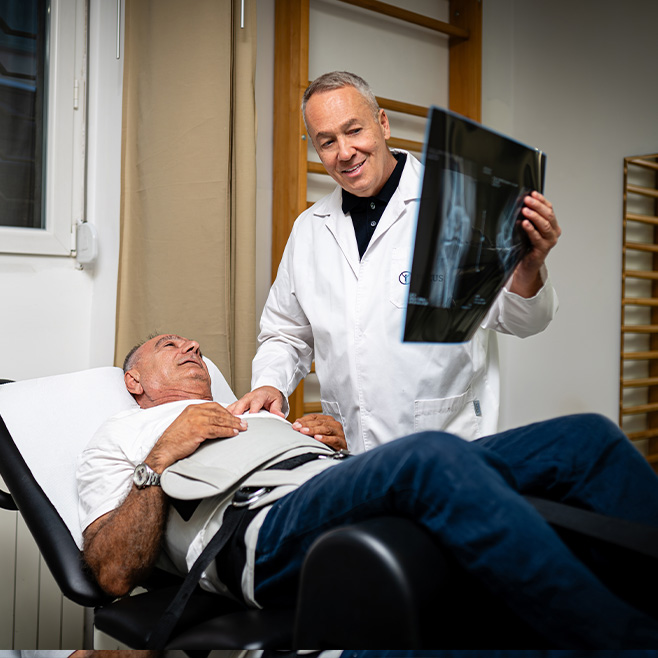
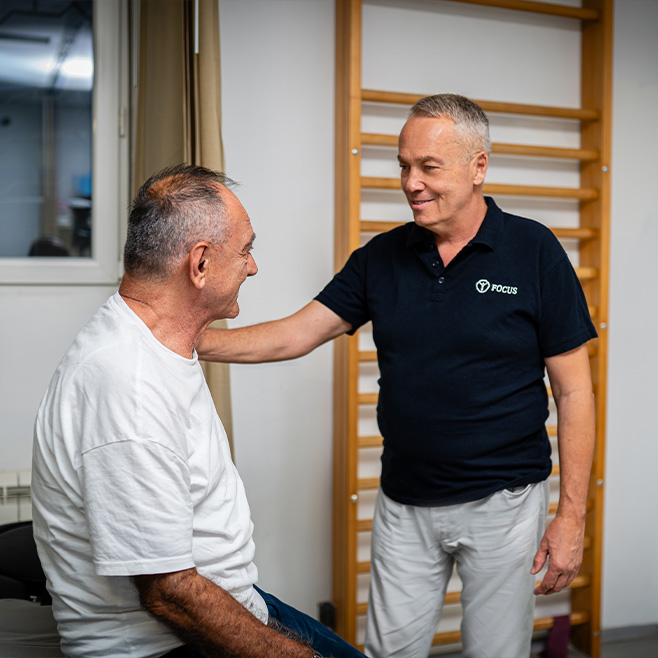
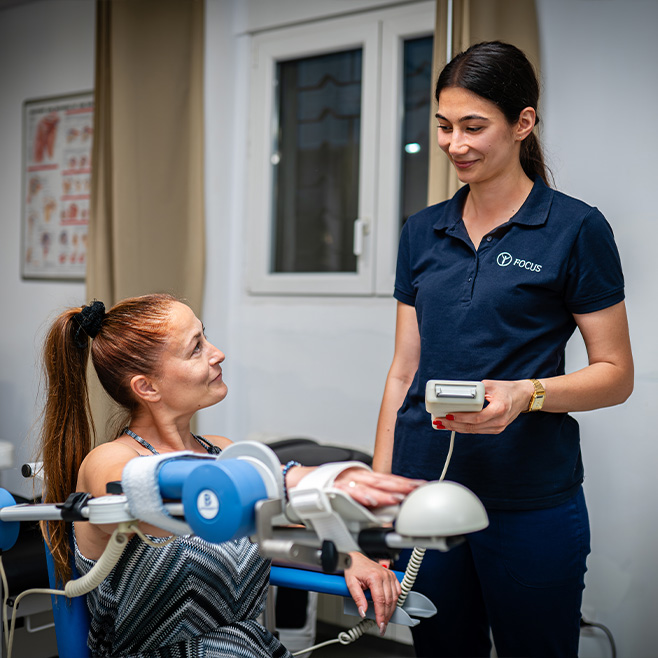
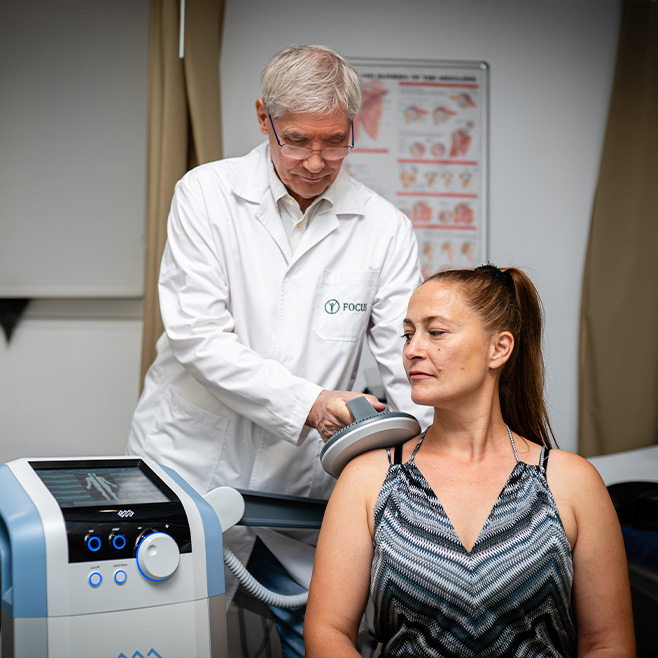
See the experiences of our satisfied patients who successfully recovered with the help of our physical therapy. Get acquainted with the testimonies of patients who faced various joint injuries, sports knee injuries, back injuries and similar problems, which we quickly, efficiently and successfully treated.
Aesthetic surgery
Focus Fizikal is a leading private clinic for physical therapy in Belgrade. For more than 10 years, we have been providing high-quality services that enable quick recovery and healing of our patients.

For all our current and future patients, we have made it possible to schedule an appointment online.